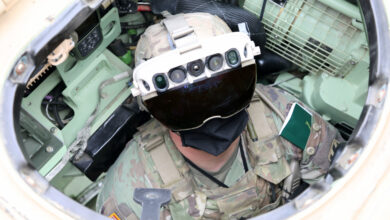NATO, Cornell Launch Undersea-Space Communication System Prototyping
NATO’s Science for Peace and Security (SPS) and Cornell University have unveiled a project to reroute allied communication from undersea to space capabilities in the event of disruption.
The $2.5-million project will produce a prototype that combines the utility of the organization’s traditional existing cables embedded across oceans with commercial high-bandwidth telecommunication satellites, maintaining a consistent data exchange between allies both in peacetime and conflict.
SPS and Cornell will work with the Swedish Defence University to produce an “ultra-precise” surveillance solution to scan for subsea cable threats.
The consortium also includes John Hopkins Bifröst, which will manage the research on redirecting communication traffic through a variety of data centers if submarine lines are disturbed or attacked.
Meanwhile, a third team will review processes for legal and jurisdictional concerns once the international data transfer plan is operational.
“Ninety-five percent of all communications flow through subsea fiber optic cables,” Cornell Engineering Mechanical and Aerospace Asst. Professor Greg Falco explained. ”If those go down, we’re done as an IT society.”
“What we want to do, ultimately, is create a new backbone for the internet and redesign how it flows. And we can do that by creating this hybrid submarine cable network and satellite communication network that works together seamlessly in order to relay data to the relevant parties.”
Demo in Two Years
Cornell said the two-year prototyping effort will be followed by a demonstration at the Blekinge Institute of Technology in Sweden.
Additional enhancements and collaborations with satellite companies to scale up the infrastructure will be based on results from the upcoming presentation.
“We are assembling pieces of the puzzle and trying to create this massive new ecosystem,” Falco said.
“I’d say this is 100% a systems engineering problem, meaning that none of the tech that we’re going to build or assemble hasn’t already in some form been conceived in other applications.”
“This is about fitting all the pieces together. From an engineering perspective, it’s hard, but then also you have the regulatory and political and economic nature of this, which is also hard.”











